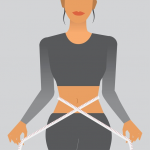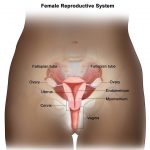Heart Attack
A heart attack occurs when the flow of blood to the heart stops. Blockages are caused by the buildup of fat, cholesterol, and other substances in the arteries that supply blood to the heart (coronary arteries). The plaque eventually breaks apart and clots, cutting off blood flow and damaging the heart muscle.
Also known as myocardial infarction, a heart attack can be fatal, but treatment is improving every day. If you think you are having a heart attack, calling 112 emergency services for medical help is critical.
Heart Attack Symptoms
Heart attack symptoms vary from person to person, but common symptoms include:
- Pressure, tightness, or pain in the chest and arms that spreads to the neck, jaw, and back
- Nausea, indigestion, heartburn, and abdominal pain
- Shortness of breath
- Cold sweat
- Weakness
- Dizziness
Risk factors
Certain factors contribute to the formation of fatty deposits (atherosclerosis) that narrow the arteries in the body.
Heart attack risk factors include:
Age: Men over 45 and women over 55 are more likely to have a heart attack than younger men and women.
Tobacco: Smoking increases the risk of heart attack.
High cholesterol and triglyceride levels: High levels of low-density lipoprotein (LDL) cholesterol (“bad” cholesterol) can narrow the arteries. However, high levels of high-density lipoprotein (HDL) cholesterol (“good” cholesterol) reduce the risk of heart attack.
Obesity: Obesity is associated with high blood cholesterol levels, high triglyceride levels, high blood pressure, and diabetes. However, losing just 10% of your body weight can reduce this risk.
Diabetes: Insufficient production of the hormone insulin by the pancreas or the body’s inability to respond to insulin causes blood sugar levels to rise, increasing the risk of heart attack.
Metabolic syndrome: This occurs when you are obese, have high blood pressure, and high blood sugar. Metabolic syndrome doubles the risk of developing heart disease.
Genetic factors: If you have a family history of heart attacks, you are at risk of having one.
Lack of physical activity: Being inactive contributes to high blood cholesterol levels and obesity. People who exercise regularly have better cardiovascular fitness, including lower blood pressure.
Stress: Stress is among the risk factors for heart attack.
Illegal drug use: The use of stimulant drugs such as cocaine and amphetamines can trigger spasms in the coronary arteries, which can lead to a heart attack.
History of preeclampsia: High blood pressure during pregnancy is called preeclampsia and increases the risk of heart disease throughout life.
An autoimmune condition: Conditions such as rheumatoid arthritis or lupus can increase the risk of heart attack.
Heart Attack Diagnosis Methods
First, risk factors that could lead to a heart attack should be looked for during regular physical examinations. Questions are asked about symptoms; blood pressure, pulse, and temperature are checked. Your heart is monitored by connecting you to a heart monitor.
Diagnostic tests include:
- Electrocardiogram (ECG): The first test performed to diagnose a heart attack records the electrical activity of the heart through electrodes attached to the skin. The heart’s movements are displayed on a screen or recorded on paper in the form of waves. Since damaged heart muscle does not normally give off electrical signals, an ECG can indicate that a heart attack has occurred or is ongoing.
- Blood tests: Certain heart proteins slowly leak into the blood after a heart attack. Emergency room doctors will take a blood sample to test for the presence of these enzymes.
- Heart catheterization
- Chest X-ray
- Coronary angiography
Heart Attack Treatment Methods
Heart attack treatment in the hospital: Every minute after a heart attack, more heart tissue is damaged or dies. Restoring blood flow quickly by a team of specialists in a hospital helps prevent possible heart damage.
Medication
Medications given to treat a heart attack include:
Aspirin: The 911 operator may tell you to take aspirin, or emergency medical personnel may give you one right away. Aspirin reduces blood clotting, allowing blood to flow more easily through a narrowed artery.
Thrombolytics: Also known as clot-busters, these medications dissolve the blood clot that is blocking blood flow to your heart. The sooner you receive a thrombolytic medication after a heart attack, the greater your chance of survival and the less damage your heart will sustain.
Antiplatelet agents: The emergency department may give you other medications known as platelet aggregation inhibitors to prevent new clots from forming and to stop existing clots from growing.
Other blood thinners: Blood thinners reduce the likelihood of clots forming and may be given intravenously or by injection.
Pain relievers: A strong pain reliever such as morphine may be given.
Nitroglycerin: This medication is used to treat chest pain (angina) by widening blood vessels and improving blood flow to the heart.
Beta blockers: These medications relax the heart muscles, slow the heart rate, and lower blood pressure.
ACE inhibitors: These drugs lower blood pressure and reduce stress on the heart.
Statins: These drugs control blood cholesterol levels.
Surgical and Other Methods
In addition to medication and first aid, one or more of the following procedures may be used to treat a heart attack:
Coronary angioplasty and stenting: Also known as percutaneous coronary intervention (PCI), this procedure involves doctors inserting a long, thin tube into a blocked artery in the groin or wrist. If you have had a heart attack, this procedure is usually performed immediately after cardiac catheterization to locate blockages.
Coronary artery bypass surgery: In some cases, doctors perform emergency bypass surgery during a heart attack. However, bypass surgery may also be performed within the first three days or seven days after a heart attack. Bypass surgery is a procedure to open blocked and narrowed arteries. You may need to stay in the hospital for a few days after the bypass surgery to ensure that blood is flowing to the heart and that your condition is stable.
Cardiac Rehabilitation
Cardiac rehabilitation programs, which begin in the hospital and continue after returning home, focus on four main areas. This rehabilitation process includes medication, lifestyle changes, emotional support, and a gradual return to normal life.
Proper implementation of the program is very important. Individuals who participate in cardiac rehabilitation after a heart attack generally live longer and have a lower risk of complications.









